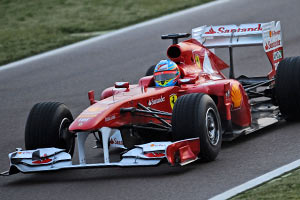Taken in isolation you'd be 100% correct, but with the beam wing just above it having far greater influence over the aerodynamics in that region I doubt the crash structures shape has any material effect beyond enabling the other aero parts to do their jobs.n smikle wrote:And the curved crash structure does create downforce. This is something that is glaringly fundamental. The first turbines were impulse turbines and the blades use a similar shape. I am not arguing, I am stating a fact that curving the crash structure makes down-force, regardless of the beam wing. So with the beam wing it is a double whammy as I said orgininally. nothing there to argue?
The reason the teams are moving the crash structure down and the beam wing up is to free up the space underneath the beam wing to make that part more effective by increasing the span.







